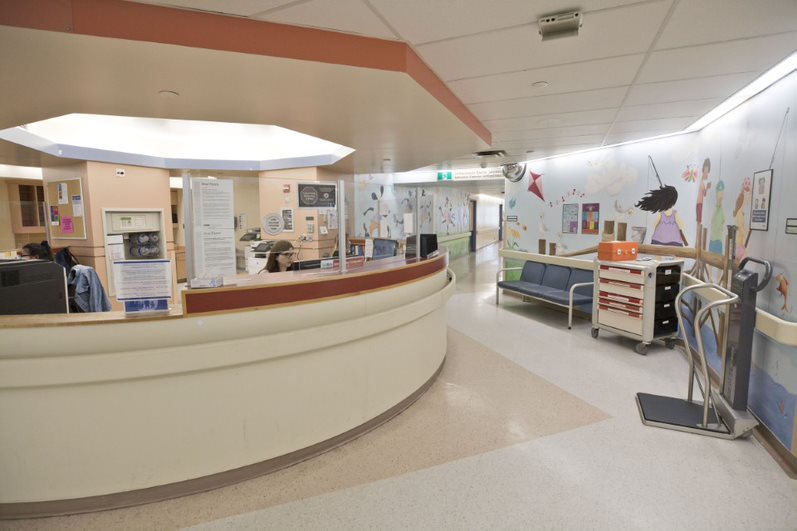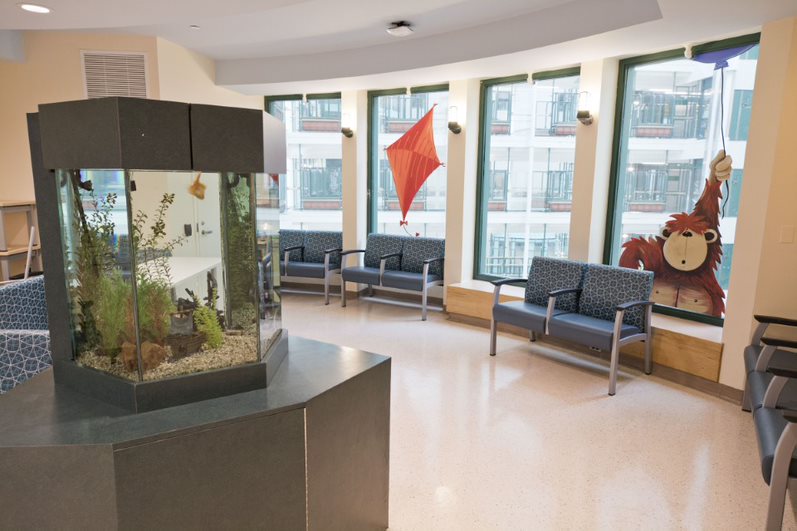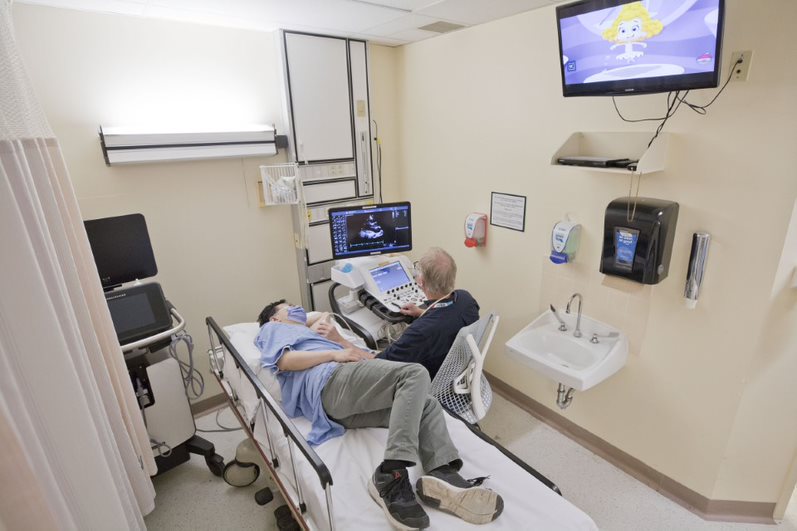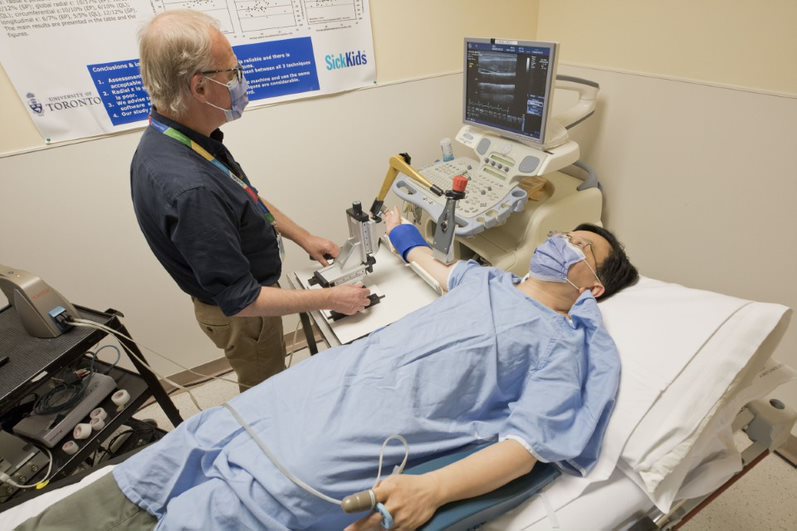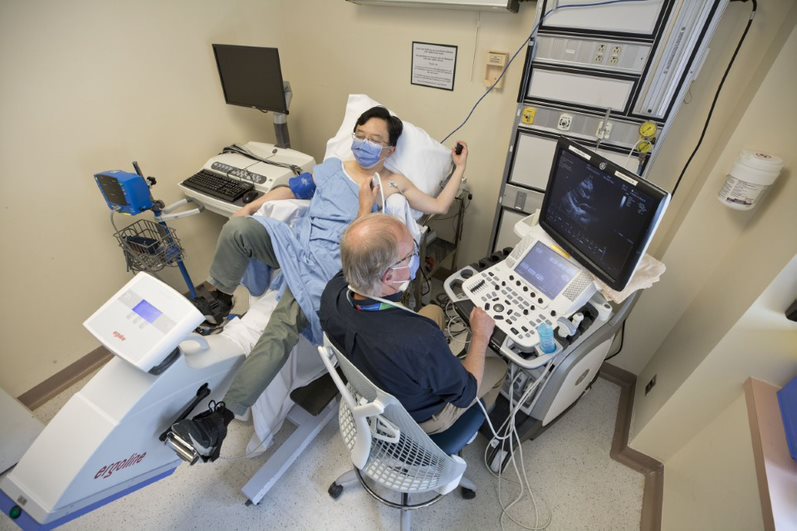What is cardiovascular ultrasound?
It is the use of sound waves to create images of the heart and blood vessels that allows us to diagnose and assess cardiac and vascular diseases. This non-invasive procedure uses a special ultrasound camera placed on top of the skin and emits safe sound waves into the body. The sound waves meet the structure in the body and reflect (or echo) back to the camera, which then processes them into images.
Watch a video of Shaun’s journey through the Echo Lab to learn what to expect if you are coming to SickKids for one of these tests: an echocardiogram (echo), a vascular ultrasound or a bicycle stress echo:
Cardiac imaging (a.k.a. echo)
Ultrasound image of a normal heart demonstrating the right atrium (RA), the right ventricle (RV), the left atrium (LA), and the left ventricle (LV).
Vascular imaging and assessment
Our lab also acquires ultrasound images of the body’s blood vessels to study the interactions between them and the pumping of the heart. This interaction, known as ventricular-arterial coupling, is a key determinant of cardiovascular performance. For example, adults with abnormal arterial stiffness and a mismatch between ventricular and arterial stiffness have been found to have a greatly increased risk of cardiovascular disease.
Ultrasound image of the radial artery of the arm. Captured using high frequency ultrasound technique.
Bicycle stress echo
Ultrasound image of the heart while the subject is resting, right before the first exercise stage of bicycle stress echo (Heart rate = 90 beats per minute).
Ultrasound image of the same heart, during the peak exercise stage of a bicycle stress echo (Heart rate = 148 beats per minute).
Participating in Research
We are studying the heart and blood vessels in healthy children and young adults to better understand heart health in children and adults with heart disease.
If you or someone you know might be interested, or would like more information, please contact us at CVUS.research@sickkids.ca
Learn more about this research opportunity!
Ultrasound image of abnormal blood flow from the pulmonary veins to a vertical vein. Captured using colour flow imaging.


